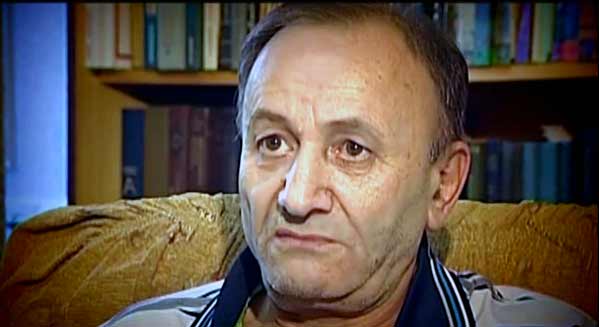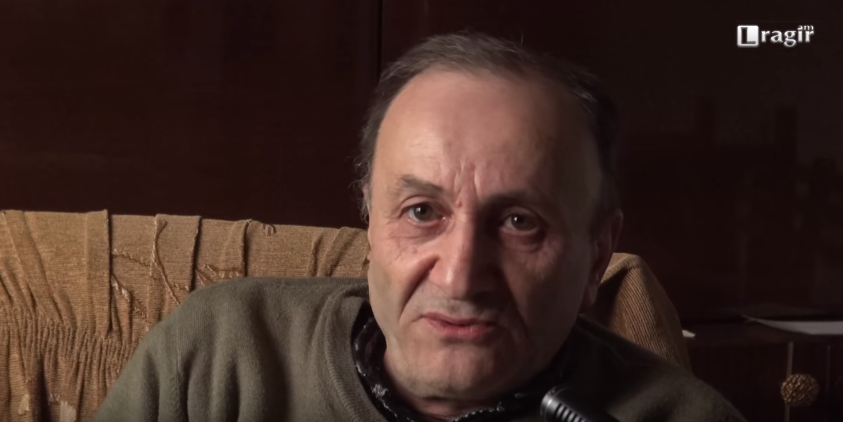The investigation is underway. Nobody is arrest.

“On August 30, 2007 at approximately 10:45 p.m. soldier Tigran Ohanjanyan, who was serving near the unit’s communication point, was electrocuted and died immediately after touching the wire that supplied electricity to the radio relay station.” This is the Ministry of Defense’s official version of the story of Tigran Ohanjanyan’s death. A criminal case has been initiated under Article 376, Part 2 of the RA Criminal Code (Negligent attitude to service that caused grave consequences) and two soldiers were charged. In January 2010, after three years of Preliminary Investigation, the prosecution of the two soldiers was stopped and the documents of the criminal case were sent back to the RA Military Prosecutor’s Office to identify the person who committed the crime and to make an indictment against him. However, the soldier’s parents and expert Ruben Martirosyan categorically disagree not only with the hypothesis brought by the Ministry of Defense but also with the process of the Preliminary Investigation.
According to Tigran Ohanjanyan’s parents, their son was murdered by the bodyguards of Haykaz Baghmanyan, former commander of the Army Corps and currently the deputy chief of the headquarters of the RA Armed Forces. Baghmanyan’s bodyguards were not involved in the criminal case in any way. The fact that the bodyguards’ room is located only 1.5 meters from the scene of the crime and they were therefore informed about the incidents was ignored. Ruben Martirosyan thinks that there have been a number of violations of law. In particular: evidence was delayed and, therefore, was modified by the time it was attached to the case, many facts were ignored, and not all hypothesizes were mentioned in the forensic examination report.
To have a comprehensive picture of the preliminary investigation and the judicial process of the case we present references from a publication entitled: “Analysis of the violations revealed by the preliminary investigation and the judicial processes regarding the non-combat fatalities in the RA armed forces.” The publication was prepared by Helsinki Association expert Ruben Martirosyan and a member of the Army in Reality civic initiative group, Lala Aslikyan.
The report will be published in the framework of Peace Dialogue NGO’s Safe Soldiers for a Safe Armenia project. By exposing the mechanisms by which the violations were concealed, this analysis will draw attention to the formation and the development of the atmosphere of impunity in this field. The publication includes a complex examination of 22 fatalities in the RA armed forces since 1999.
With the help of this publication and research, the authors intend to draw public attention to the negative occurrences practiced in the RA armed forces, thus highlighting common links between these cases.
As R. Martirosyan mentions, it is not clear whether the uniform that was considered evidence really belonged to Ohanjanyan or not. In the morning of the day Ohanjanyan died, an employee of Gegharkunik Military Police found Ohanjanyan’s torn military shirt in the area of the military unit. Abusing his official position, an MP examined and photographed the shirt. Investigator G. Manukyan did not send the shirt for expert analysis. Two months following the incident, only after the aggrieved party’s numerous appeals, the investigator sent a military uniform to an expert, claiming that it belonged to Ohanjanyan.
This military uniform could not have belonged to Ohanjanyan. This is obvious from the MP’s reports and attached photographs.
- Judging from the photographs of the uniform available in the expert reports, the uniform sent to the expert is brand new, without damage, while Ohanjanyan’s real uniform was torn and dusty (a photograph is available in the case).
- A uniform of size 52 corresponded to Ohanjanyan’s body measurements, while the investigator sent to the expert a size 46 uniform.
Another fact: according to the documents in the criminal case, the death was reported at approximately 11p.m. But when the mother of one of the soldiers serving in the same unit met Ohanjanyan’s parents, she informed them that on August 30at around 9:00p.m-9:10p.m her son called her from the unit and said that Tigran had died. The soldier in question later denied that there had been such a phone call. At the point of denial, he had already completed his military service. However, under pressure from Ohanjanyan’s parents, the list of the phone calls made from his phone was disclosed. It proved that a phone call was made to his mother. The preliminary investigative body has refused to address this fact because it would cause the testimonies of all the witnesses to lose their credibility.
R. Martirosyan refers also to forensic shortcomings, stating that not all the injuries on the body were reported by the forensic examination. It was not mentioned that Ohanjanyan’s left ear was hurt, swollen, red, and looked different than the right ear. It was also not mentioned that fingers of the deceased were bruised on the palm side. In addition, when Ohanjanyan was drafted to the army, one of his front teeth was missing. But the forensic doctor reported that the upper denture was complete.
In Janury 2011, the RA Military Prosecutor’s office authorized the Investigative Service of the RA Ministry of Defense to launch a new investigation. Currently the investigation of the criminal case is underway. Nobody has been arrested or detained.
The photograph was provided by T. Ohanjanyan’s relatives.
The project Safe Soldiers for a Safe Armenia is supported by IKV Pax Christi.
IKV Pax Christi is a Dutch civil society organisation that works with its partners for peace, reconciliation and justice worldwide. The organisation supports local peace efforts in conflict areas and builds bridges, nurture mutual understanding and improve disrupted relations between groups. IKV Pax Christi’s aim is to prevent conflict and to build a peaceful, democratic and just society.
Posted 20 September, 2013















